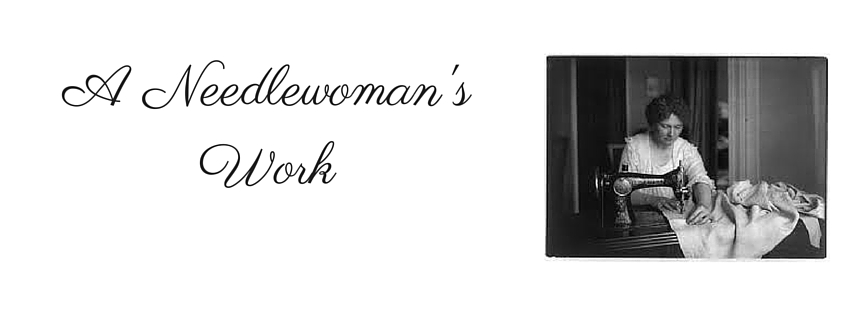This is the most frequent small repair that can be done very simply at home. All it takes is some knowledge and care.
Sewing on a button is easy, but it does require a few tricks to make the result professional. The inclination is to sew the button on very tightly and very thoroughly. I suppose, this is a response to make sure to never lose the button again. However, tightly sewn buttons do not allow the button hole to close snugly underneath the button, but rather the tightly sewn button spreads buttonhole causing puckers in the button placket. The end result is the sloppy appearance of misplaced buttons and no amount of readjusting the button placement will solve this problem.

Let's begin with your tool list. To sew a button, you will need some matching thread, an appropriate sized needle, and scissors. You will also need a "spacer" that are appropriate to the thickness of the fabric. I use pins for fine fabrics like blouses, a hat pin for fabric such as twills, and some round tooth picks for heavy denims or wool coat fabric. Beeswax and an iron are helpful to condition the thread, but not absolutely necessary.

To sew a button correctly, you must begin by marking the correct position. If you are replacing buttons, the holes from the previous sewing will still be visible. If the garment is new, make your buttonholes and then pin through the buttonhole marking the vertical position of the button. Remove the buttonhole side to the garment and measure from the garment edge to establish an even placement. This system works well for things like shirts where there are a long line of buttons which must line up. Single or short lines of buttons, such as on cuffs, can be marked by pinning the garment closed and pushing a marking pencil through the center of the buttonhole and marking the facing underneath where the button will be sewn.

Use double thread or buttonhole twist. Double thread is easiest for most beginners to have at hand. Going out of your way to obtain buttonhole twist might be important if you are sewing buttons on which will encounter a great deal of strain and wear. Your heavy winter wool coat might be a situation where buttonhole twist might come in handy. Waxing the thread, by running over some tailor's beeswax and then ironing the thread to melt and set the wax will help with thread strength, but it is not necessary for a good job.
Now tie a knot in your thread and leave a three inch tail. You will need this tail later to tie off the button securely. You may not be able to see the knot in the thread in the photo but it is there, near the point of the needle.
Bring your needle up at the marked point on your garment and thread the button on to your needle. Settle the button into position with your thumb. Now use your spacer to add some slack in your stitches. Sew your button by placing the spacer between the fabric and the button in such a way so that the stitches will go around the pin or toothpick. Take three or four stitches for each pair of holes in the button. Use care to make sure the backside of your button fabric is neat also. Don't have a spider's web of misplaced stitches.
Now bring your need up to the front of the fabric but not through the button.
Remove the spacer and wind your thread underneath the button several times very tightly forming a thread shank which raises the button slightly from the fabric. This is the reason you want neat stitches. They need to close together in order to form a shank.
After winding the shank bring your needle to the back and tie a knot using that long tail you left on the thread when you started.
Finally, bury the thread. Instead of cutting the thread close to the knot and risking the knot eventually working loose, use your needle to run the thread into the garment between the front fabric and the facing exiting again from the back a little ways from the knot but for the most part still under the button. Cut the thread close to the fabric leaving a little bit of thread hidden inside the garment. Do the same for the long tail end.
The buttonhole will close around the shank allowing the button to rise above the hole loosely.
Blazer and coat button often have a shank on the back of the button. Sew these button on loosely also making a short thread shank in addition to the button's shank. The still assures the button to rise above the thickness of the garment fabric.
Follow these simple steps and you will lose fewer buttons.
 Doilies are very old fashioned.They are viewed as something belonging to the past when antimacassars were an essential part of each sitting room. Doilies protected tables from scratches from vases, lamps and brica-brac. We have little of this these days. And who has a sitting room reserved for only the best of guests? Not I. But I still like a good doily. I can't explain it. I can't justify it. I can't not have a new one.
Doilies are very old fashioned.They are viewed as something belonging to the past when antimacassars were an essential part of each sitting room. Doilies protected tables from scratches from vases, lamps and brica-brac. We have little of this these days. And who has a sitting room reserved for only the best of guests? Not I. But I still like a good doily. I can't explain it. I can't justify it. I can't not have a new one.












